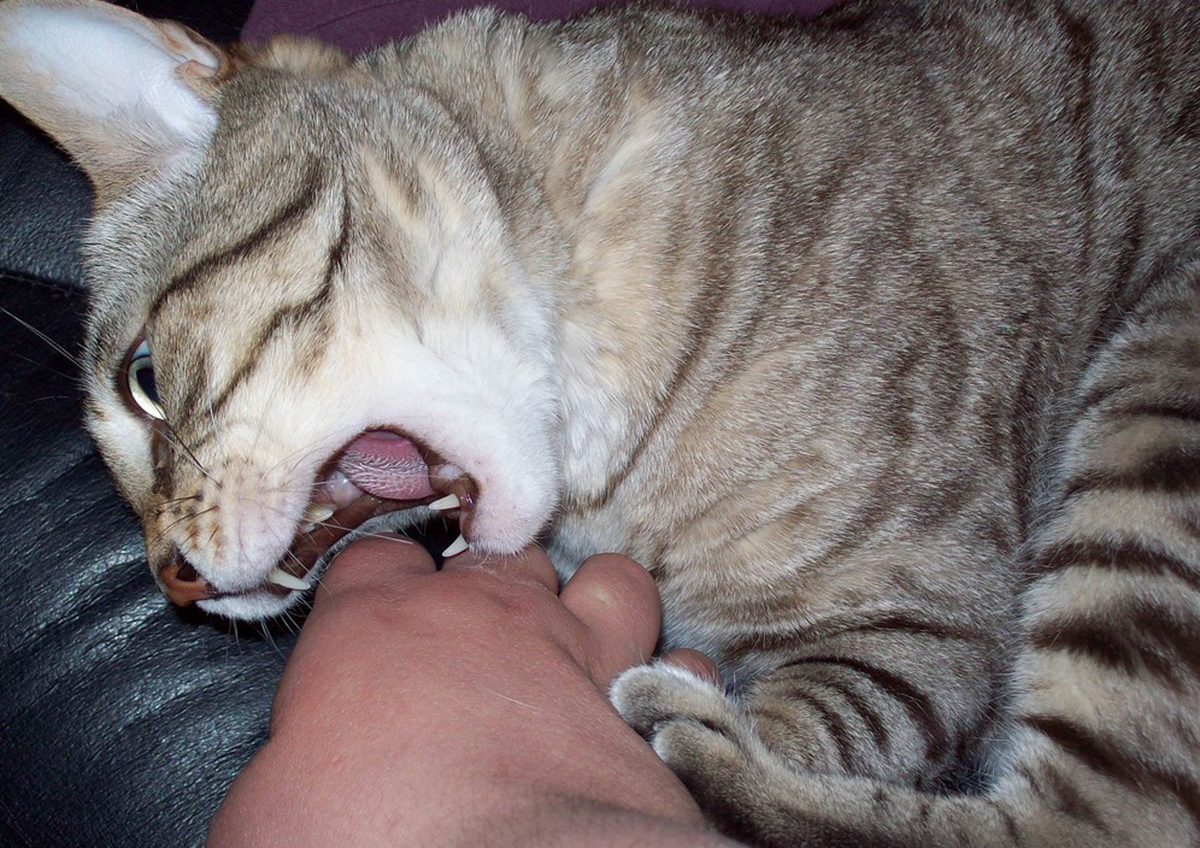Table of Contents
According to the results of a three-year study on patients who suffered from cat bites treated in one institution (Mayo Clinic), one-third of the patients needed hospitalization to undergo minor surgical treatment. Patients who had a history of smoking, who had weak immune system function or were bitten over a joint were most likely to be hospitalized for complications. Swelling and redness over the wound upon admission were also associated with higher likelihood of hospitalization.

Many animals, including cats and dogs harbor rabies virus, so anyone who is bitten by an animal should report the incidence to the animal control section of their local health department. If the animal is suspected to be infected with rabies the victim must seek medical attention to receive anti-rabies injections if needed, since rabies is a fatal illness.
Cats and other animals can also transmit tetanus infection, another life-threatening condition. You will receive vaccination called tetanus toxoid if you have not been recently vaccinated for tetanus. Tetanus immune globulin may also be given to provide additional protection against infection.
The most common infection associated with cat bites, however, is caused by bacteria called Pasteurella multocida, which is usually found in the upper respiratory system of cats and other animals. Aside from bites, these organisms may also be transmitted through scratching or licking by a cat. Other types of bacteria may coexist with the microbes and cause infection as well.
Another condition associated with cat bites is cat scratch disease, caused by bacteria called Bartonella henselae. This disease may spread through a scratch or bite from an infected cat. Unlike other types of infection, this is not usually serious and may be treated with antibiotics.
What to Do When Bitten by a Cat
If the wound is bleeding, press the area with a clean gauze or towel to stop the bleeding. One should seek immediate medical treatment if bleeding is not controlled after prolonged application of pressure. People who have a weak immune system or have serious conditions such as cancer, liver disease and HIV infection, as well victims with serious injuries such as broken bones or large wounds are likewise advised to seek immediate treatment. It is important for patients to be evaluated and given adequate treatment within eight hours after being bitten to reduce their risk for serious infection.
If bitten by an unfamiliar cat or other animal, you may need to receive anti-rabies shots as well as anti-tetanus shots.
See Also: Interesting Things about Dogs and Cats
Cat bite victims who do not go to their doctors must watch out for signs of infection such as swelling, worsening pain, fever, redness, warmth and wound discharge or pus. Do not wait for complications to develop – see a doctor immediately.
Treatments consist of wound cleaning, oral antibiotic therapy and wound suturing, if necessary. If your wound is infected, antibiotic injections may be given.
Doctors typically assess the severity and depth of the bite and may prescribe antibiotics, especially if there's a high risk of infection or if an infection is already present. Amoxicillin-clavulanate is often the first choice, but the type of antibiotic prescribed can vary based on the individual and any potential allergies. If the wound is particularly deep, a tetanus booster might be recommended, especially if your last vaccination was more than five years ago.
In some cases, especially if the wound is deep or there's concern about trapped bacteria, a doctor may choose not to close the wound with stitches but rather leave it open to heal to reduce the risk of infection. It's also essential to monitor for signs of cat-scratch disease, a bacterial infection caused by Bartonella henselae, which can be transmitted through cat bites or scratches. Symptoms can include fever, fatigue, and swollen lymph nodes.
X-ray images may be requested to evaluate if any bone has been broken or if some tooth fragments have been left behind. Hospitalization may be necessary if infection is severe and if additional treatments (e.g, surgery) are recommended.
- Babovic N, Cayci C, and Carlsen B. Cat Bite Infections of the Hand: Assessment of Morbidity and Predictors of Severe Infection. J Hand Surg, 2014 Feb.Vol 39, Is 2 , pp 286-290. http://www.jhandsurg.org/article/S0363-5023%2813%2901539-6/abstract
- USA Today. A cat bite can turn into a hospital stay, study. http://www.usatoday.com/story/news/nation/2014/02/09/cat-bite-hospital-stay/5276997/
- ASSH. Animal Bites. http://www.assh.org/Public/HandConditions/Pages/AnimalBites.aspx
- Medscape. Pasteurella Multocida Infection. http://emedicine.medscape.com/article/224920-overview
- Medline Plus. Cat Scratch Disease. http://www.nlm.nih.gov/medlineplus/ency/article/001614.htm
- UpToDate. Patient information: Animal bites (Beyond the Basics). http://www.uptodate.com/contents/animal-bites-beyond-the-basics
- Photo courtesy of pestbarn by Flickr : www.flickr.com/photos/pestbarn/2572656855/
- Photo courtesy of kniemla by Flickr : www.flickr.com/photos/15308454@N06/2389551733/
- www.jhandsurg.org
- www.usatoday.com
- www.assh.org
- medscape.com
- www.nlm.nih.gov
- www.uptodate.com

